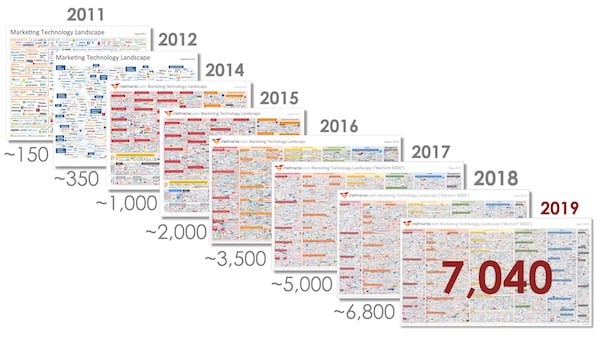5 Emerging Trends For Acquiring New Customers With Digital

The changing tides of digital
So much in the digital world has changed in recent years. There's been a lot of growth and transition as the industry matured. Tactics that used to work well are dying. Technologies that didn't exist just a couple years ago are catching fire. Gone are the days of the inbound funnel where prospects simply convert through a series of forms and downloads through the awareness, consideration, and decision stages. Artificial intelligence, chat bots, sales enablement, and video marketing are trending sharply. Things are changing so fast, it's difficult for organizations to keep up.
Agencies are doing different things these days, and I believe it's all been led by buyer behavior. As consumers have evolved,
I talk to a lot of people trying to get their company to the top. They come to us looking for help acquiring new customers online. My observation is that most organizations aren't attacking the change properly, or even at all. Most of the companies we talk to have fallen well behind. They're facing serious issues with their technology stack. They don't have the marketing assets and collateral to compete. They don't have the infrastructure or processes to track, manage, and serve potential buyers in the marketplace. They're not getting found often enough and aren't worth being found. They aren't capable of treating their prospects and customers the way they expect to be treated these days, and they're missing out on a lot of business because of it.
Understand what you really need to build in order to win
I think the central problem is that organizations don't really understand the game they're trying to play. They're working off partial information that's also often completely outdated. Inbound marketing isn't the answer. Sales enablement is little more than a buzz word in most cases. A strong social media presence is only a fraction of the equation. If you want to grow your business by leveraging the power of the internet, you're committing to building a sales machine. A big, digital sales engine that works while you're sleeping. It's bigger than your sales team. It's bigger than your marketing team. When developed correctly, it's a completely connected combination of all the latest capabilities, working together towards a common goal.
So that's what this article is about. I want to share our approach to winning with digital at this point in time. Things change quickly. A year from now this article will undoubtedly need updates. If I think back to a year ago, there's a portion of our current tactics that we weren't even considering.
Emerging Trend 1 - Introducing the Growth Stack
I'm going to point out five digital marketing and sales trends that our agency believes are gaining traction. They're a combination of strategies and tactics that are emerging as keys for success. They're all working well to drive results where other options are not.
The first trend is the concept of the Growth Stack, or Growth Machine, as I prefer to call it. This is really just a new way of illustrating the need for a completely connected strategy for growing your business through online channels. It's the concept of blending a complete set of strategies, technologies, and people into a cohesive sales and marketing system. I'll cover a lot of details as we go, but the growth stack is the emerging trend you need to get behind. Warning, you very well may need to change your mindset if you want to win.
How we approach growth stack sales and marketing
We know why Growth Machines succeed, and we certainly know what makes them fail. Over the years we've learned a lot about what works and what doesn't. We know you're eager to see results and also interested in developing a system for scale. We believe it's our role to guide you through that journey and help you reach your goals. We believe our role as an agency is to guide our clients through the complications and tribulations that come with this journey.
Our agency structure, processes, and technology stack have been built to maximize the results organizations gain from their Growth Machine. We have the core understanding, experience, and expertise in deploying the digital tactics and emerging trends necessary to reach new clients on the internet. Our clients have the intellectual property and industry expertise that make our efforts connected and extraordinary. Our recipe is simple, to combine our strengths within the growth stack to build a winning combination.
We design and develop the complete sales and marketing system to increase client acquisition rates in most cases. While there is a wide array of organizational value to be had, the general the purpose of the growth machine is to rain new clients. To get to the point where new opportunities flow, we need to get the entire system in place and live, so we can enter into a continuous cycle of improvement. Growth stacks can't take years to come together. They can't be stalled by the pursuit of perfection and over-engineering. They need to launch fast and then continue to be built upon in a live state. More on this later.
Why your growth machine is the most valuable asset in your organization
Your digital sales and marketing efforts should include the development of a digital sales machine that's built to serve your organization for years to come. The growth system and strategy we build will generate value well beyond sales leads. The growth stack has a much bigger-picture value.
- Improved brand awareness, identity, and reputation
- Increased performance across all key performance metrics we goal towards
- Real-time visibility into all marketing/service/web/sales activity, as well as lead sources
- Increased effectiveness for sales with lead follow up, active selling time, accuracy, and win-rates
- A centralized hub for managing and tracking a total customer experience
- Your website will serve as your #1 tool for sales, marketing, and customer service
There aren't many assets that provide the business with that level of value. I think the business world is still lacking the ability to truly conceptualize and leverage digital assets to this degree. I believe a lack of understanding and lack of tangibility are key reasons why technology-based systems aren't valued the same as other organizational assets. It's easy to put a tangible value on people, buildings, and products. It's harder to get a grip on the deep level of capabilities and value that lurks behind the veil of 'the cloud.' Make no mistake, it's in there. You just have to set it up correctly and then turn it loose.
Winning with digital takes vision, and mindset for growth
One of the most common reasons for lagging, stagnant, or abandoned digital campaigns comes from a lack of organizational buy-in and top-down leadership. Success comes from a commitment to success. If your organization wants to get serious about competing to win online, you have to get behind this initiative. They have to build and lead the vision for modernizing their business processes.
I've seen a lot of great plans killed by organizational in-fighting and power struggles between departments. I've seen sales individuals refuse to adopt systems, built to support them in serving the buyer's expectations because they were too entrenched in old habits. I've seen organizations that overcame these challenges with strong leadership, and other organizations give up and fall further behind. There are many things that can make the Growth Machine die in the early innings, but none are as common or ominous as misaligned vision.

If you want to get it right, everything can't be a fight. You can't afford to have people working against each other, preventing progress, stalling deliverables, and fighting the modernization initiative. My call to action is for leadership. You must embrace an attitude for change because the world we're competing for new clients has changed. The Growth Machine will provide plenty of opportunities for quick wins and confidence-building achievements, but it's the long term success most businesses crave. My warning is that you shouldn't get so caught up in short term results that you take your focus off long-term scale. If you want immediate results, advertise. If you want to build a system that pays the organization back for years to come, build a Growth Machine and get into a continuous improvement process. Make adjustments, but don't make sacrifices.
The need to have a big-picture view of results, goals and scale
I believe it's critically important to understand that results don't come overnight. While there are always opportunities for quick wins and early success, it's the sustainable and scalable Growth Machine you should goal towards. The approach requires vision, patience, and careful execution to bear fruit.
Vision comes from looking down the road towards goals and putting plans together to help you get there. We believe in providing a road map for the first year, so our clients have a good idea of how strategies and priorities will change. We know successful Growth Machines require different elements, strategies, and tactics at different points in time, especially in the early months, when global strategy elements and systems requirements are so heavy.
On the other hand, it can be really difficult to see 8 or 10 months down the road. Everyone involved will learn a lot from the successes and struggles faced during the first year. I'm a big fan of letting performance metrics light the path forward. I'm leery of agencies that believe the best way for organizations to grow is with an Inbound retainer with the same amount of the exact same activities, run for 12 straight months. In my experience, growth campaign priorities must evolve to maximize effectiveness at different points in time.
Competing in this age of sophisticated buyers and changing strategies, I believe agencies need to be much more adaptable and versatile. They should be able to adjust strategies and assets as the campaign matures. Because of this inevitable desire to adjust tactics, Revenue River plans growth campaigns differently. We've found we can maximize results and reach client goals by taking an annual outlook with different themes to help everyone stay focused on what's important. The goals are the compass, and the road map has a few milestones to work towards.
Focused planning over shorter blocks of time
With an annual outlook in place, we'll get more granular over shorter periods of time. This is where I think there's room for different approaches. We have an approach we know works, but there are others. Many agencies leverage the Agile or Scrum for their clients, which spawned from software development project management process. This approach generally includes really short burns (often called Sprints) of days or weeks. While I appreciate the approach to planned execution over short periods of time, we've found an adaption to sprint planning to be highly effective.
We like to plan three critical phases of the first year through detailed planning. Each phase (or "Sprint") has a focused theme, and is customized with a different blend of strategies and tactics meant to provide an escalated pace of results. One key is that subsequent sprints are planned as the Growth Machine comes together, not before. It's so important to allow pieces to come together, data to begin coming in, and strategies to mature. Here's what the first year of a Growth Machine strategy should look like:

TOTAL LAUNCH PAD GROWTH MACHINE
In the first sprint you've got to get the critical pieces in place, live, and operational. I'll get into the detail below, but my advice is to do everything you can to ensure that all pieces of the machine get launched. Unnecessary hold ups with parts of the machine will prevent the other parts from being effective. This is foundational and fundamental. Success won't come from something that's half-built in draft mode.
WEAPONIZING THE GROWTH MACHINE
Once you get your Growth Machine off the ground, it's time to build some weapons. I describe the challenge of competing to win online like an arms race. Your competitors have been building munitions for years. They've built more weapons than you have. If you want to win the war, you have to weaponize. You have to build a lot of arms (marketing and sales assets) if you want to start winning some battles for new customers.
RACING TO GOALS
While I encourage prospects and clients to treat their digital strategy as one long race, proof of concept is important. Organizations can't wait forever for results to pour in, and I've found no better way to demonstrate that their Growth Machine strategy is working than by achieving their most meaningful goals. This phase of the plan should include less creation, more promotion, and the lion's share of any available advertising budget. You've built the weapons, now it's time to win a battle.

Technology is at the heart of digital success
One of the first things we discuss with a prospect is their technology stack. We want to know what they have to work with, recommend what they may need to add in the short term, and even develop a roadmap for
The need to blend a best-of-breed software stack around your team has never been so important. It's also never been so complicated. The Chief Marketing Technologist has been documenting technology landscapes since 2011. Over that time, the technology that businesses have access to has exploded from 150 to 6,800.
With so many choices for technology, keeping track of which solutions will actually serve your business can be a real bear. Even for agencies built to research, learn, implement, and master new software, we can only evaluate a fraction of what's out there. At Revenue River we chose HubSpot to be at the heart of our technology expertise back in 2012. That bet has really paid off, as HubSpot is the clear best-of-breed solution for launching and managing a Growth Machine.
One reason they're they clear winner is because they've chosen to open up their system to all kinds of other software products. Connect Partners as they're called are free to access their API and build native integrations. That's completely opened up the arsenal for agencies and organizations alike, allowing us to configure robust technology stacks to solve literally any and every challenge the Growth Machine faces.
We serve as our client's software planning partner through the term of our relationship. It's our job to identify the need and best technology to solve, as well as lead them through evaluation and onboarding. I believe the organization should always own the licenses and control over everything we implement. This provides them peace of mind in knowing they're not entrenched.
As our relationship develops, we help our clients realize the value of each piece of technology, leveraging the unique capabilities each software provider offers. Our clients trust us to initiate timing and negotiations for each purchase, serving as an adviser on their behalf. As top partners with many of the suggested
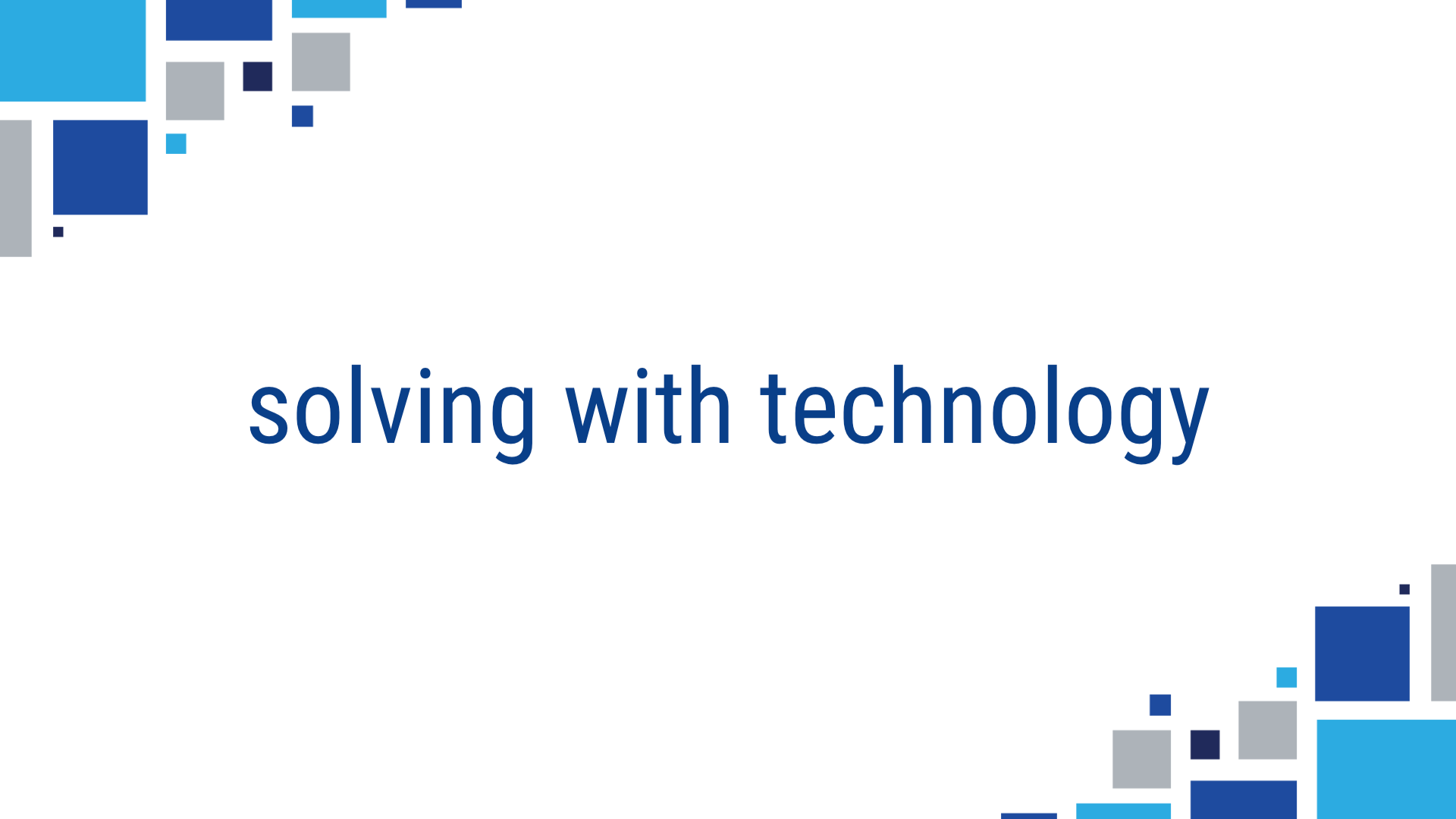
Launching your Growth Machine
Before you can generate results you have to develop the critical elements of the growth stack identified during the sales cycle as priorities. From our phased approach above, the first step in a successful Growth Machine strategy is building the machine itself. We build growth systems for organizational scale, not for short-term results.
A cohesive strategy to bring everything together, fast
We believe in a launch pad strategy process because we've found it our best chance of getting all elements of the Growth Machine live and working in a short amount of time. This total-digital growth stack has to launch fast and provide value early. To get there, we first have to align our teams and future efforts towards the goals I keep referencing. We start by developing a strategy to get us off the ground quickly. Because of all the interconnected pieces involved, we can't over-engineer the system to the point we delay go-live. It's a careful balance of building a ton of critical elements in a short amount of time and getting the system operational.
How we approach onboarding new relationships
A serious challenge in working with agencies to launch a growth stack strategy is the massive transfer of knowledge that must take place. It's so important to build a process for the transfer of intellectual property. Every element of the Growth Machine strategy needs to be developed from deep discovery and careful mapping of what different customer types. We've developed an approach for this deep discovery and planning process. The video sets up the steps, and the key parts of the process follow.

EXISTING SYSTEMS & ASSETS AUDIT
We love to begin work for our clients before we're even billable. We've found that investing into building our own understanding of what a client has to work with can really pay off at later stages of the relationship. As soon as we get access, we begin auditing. This is an investigation of all relevant digital systems and assets to understand the environment that we'll be working within. We dig deep, uncovering gaps and issues, logging observations, and developing recommendations for quick wins and long term success. The results of our audit feed our questions during the discovery process and subsequent strategy development.
STAKEHOLDER ALIGNMENT INTERVIEWS
There's nothing more frustrating or damaging to growth campaigns than conflicting priorities or misaligned motivators. We believe in aligning priorities by first understanding the priorities and goals of every key contributor on the client side. We deploy the RACI matrix for identifying responsibilities and communication requirements. Through a series of interviews with key stakeholders within the organization, we harvest what's critically important to everyone involved. We'll build our communication cadence to match the RACI model, ensuring everyone on your team is kept up to date.
DEVELOPING THE BUYER'S JOURNEY
Growth Machines work best when they target specific types of buyers. When everyone knows who they're targeting, every element of the growth campaign can draw from a complete understanding of what an ideal buyer is looking for when they make purchasing decisions. We go well beyond common persona exercises to develop a connected targeting strategy to feed marketing assets, sales collateral, and the entire communication strategy. Here's a high level view of the journeys we map for each buyer type.
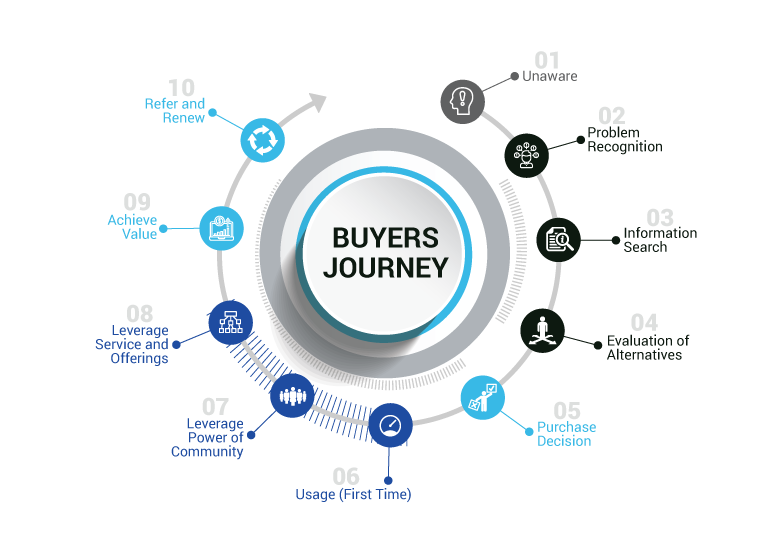
CONNECTED GROWTH STACK STRATEGY
With alignment, assessment, and targeting strategies coming together, we're ready to connect it all into an actionable strategy. We're able to develop and present a digital growth strategy that features all the critical elements for success. Elements include a competitive analysis, detailed personas and messaging, tactics for audience attraction, engagement, customer acquisition, and how to delight beyond the sale.
We build pillar content and content clusters, email marketing, premium content strategies. We develop an editorial calendar, organic search strategy, and plans for advertising. A new user experience for website visitors is presented, a deep sales system architecture map, conversational marketing, and video strategy are created. We bring everything together into a connected Growth Machine playbook that will be built in the weeks to follow.

Simplifying the elements of the Growth Machine
There's a lot to take in, I know. Have I mentioned how important it is to get all of this to come together in a timely manner? To simplify things a bit before we go deeper, think of the Growth Machine as the synergistic center of the Venn diagram. The components in the diagram are your website, marketing system, and sales system. Success with digital requires a strong, connected 3-legged stool where the website, marketing efforts, and sales system and your teams all work together towards a common goal.
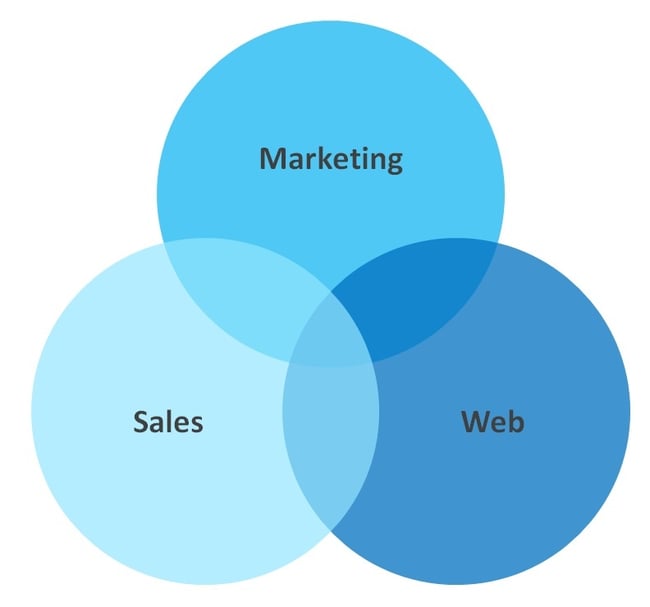
The Case for Building a Modern Sales System
Over the years we've learned that the sales system is the absolute heart of digital success. Think of the sales system as the engine of the Growth Machine. For most organizations, success with digital is measured by client acquisition, not leads. A line goes up because a sale is made, after all.
So, if you want to acquire customers through online efforts, you have to closely connect a modern sales system with your web and marketing efforts. You'll also face the challenge of getting salespeople to change their behavior and adopt the system. They have to participate in the process fully, and be closely in touch with everything that's happening with your digital storefront.
Emerging Trend 2 - Sales & Marketing Alignment
This is probably the least 'emerging' of my trends. People have been talking about the need to align marketing and sales teams since before I entered this ecosystem in 2012. I include sales and marketing alignment because I believe it's becoming more and more critical, as buyer behavior shifts. Salespeople are being forced to evolve with buyer expectations. That's leading the demand and necessity for increased visibility, context into expectations, and the need for sales people to serve buyers expectations to ultimately win the sale.
Our goal is to help our clients modernize their sales systems and team to serve the expectations of the modern buyer. We focus on our efforts of creating and optimizing a modern sales system to increase the effectiveness and efficiency of the organization's sales team. It comes down to systems and people.
System design and development can look a little different based on the pieces that may or may not already be in place. We've found that there are four different scenarios we plan for when building a sales system. I've included a short note for each application to illustrate what drives us to recommend the solution.
- CRM Migration - your existing CRM sucks, and you need a better one
- CRM Integration - your existing CRM is solid, but it's not connected with other systems
- Sales System Stand Up - you don't have a CRM or sophisticated sales process to work with
- Sales System Optimization - your CRM and processes are solid, connected, but with opportunity to improve performance
Some elements of a sound strategy carry across all four scenarios. The goal is to build a great strategy and build or optimize the system to meet the needs of the users as well as to provide management the visibility they need to make decisions.
SALES SYSTEM DESIGN
We work with sales leaders to design and engineer a best-practice system customized to their respective industry and sales approach. Our goals are to provide sales management visibility into activity and performance and establish a more effective and efficient way for the entire sales team to work. We design sales systems to serve the team and their prospect's communication expectations. We define the the launch pad sales system with "minimum viable product" in mind, so we don't get caught up in unnecessary features before launch. Here's a short list of what we do to ensure a great system gets launched fast:
- Team Interviews
- Features of Focus
- User Breakdowns
- Sales Architecture Map (example below)
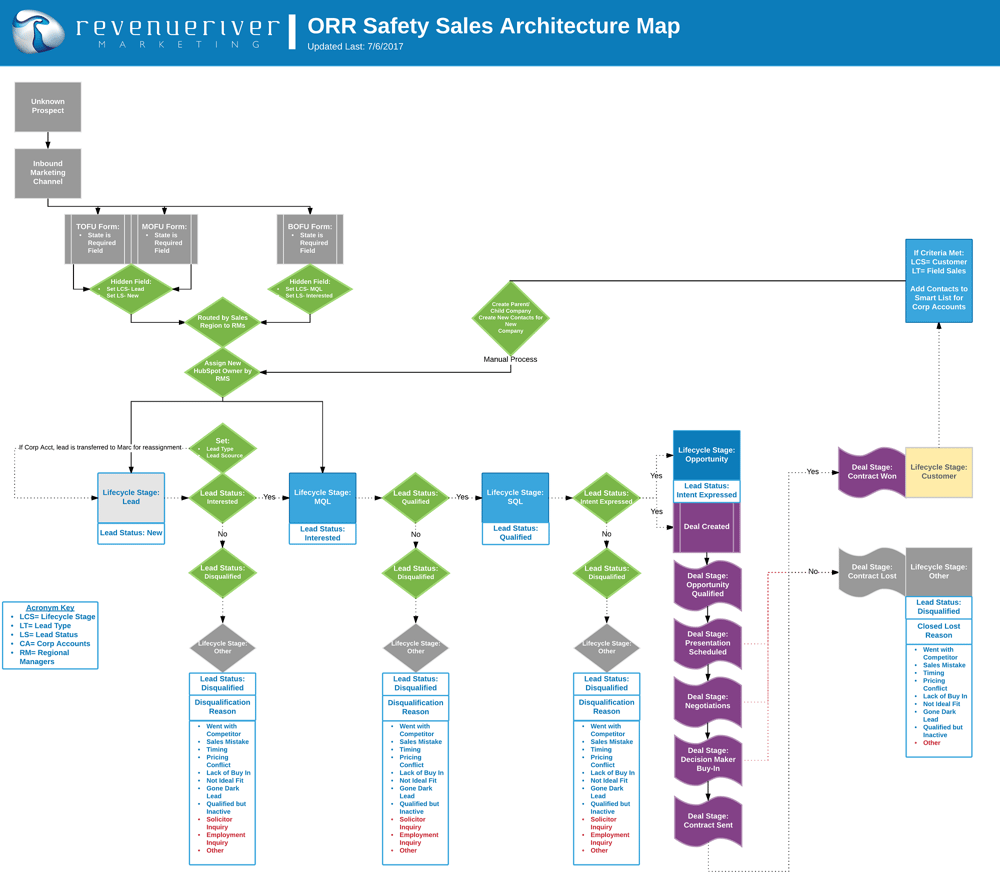
SALES SYSTEM ENGINEERING
A complete sales system requires extensive setup to serve the Growth Machine. With the design complete, we get to work building the system to serve the team. We set it up to get users in and start generating data we can leverage to continually improve the system. Feeding from the architecture map above, here's a short list of the job to be done:
- System Configuration
- System Testing & User Feedback
TEAM ONBOARDING
With a system ready to go, it's time to get the team in and operating their new process. CRMs like HubSpot have a host of individual user tools that need to be configured on a 1-to-1 basis. We go through a series of individual setup steps with each sales rep, ensuring they have the integrations and access in place to operate within the new sales system.
TEAM ADOPTION TRAINING
Successful adoption of the sales system is critical. We've found sales people adopt systems faster when they actually know how to use it. We do our part by hosting a series of live weekly training webinars with our client's sales team. We show them how to use the system, from intake to contract signature. We record all training webinars for future reference and new hire training.
RESOURCE CENTER
Sometimes sales people just need a quick reference guide. This is why we develop an internal blog to house sales training resources and recordings from previous live
SYSTEM ADMINISTRATION
Admin duties and ongoing system health checks are always necessary. Our team performs system administration duties for all sales systems, including routine maintenance, troubleshooting, optimization, lead management, and user management once the system goes live. There's always opportunity for improvement, and we stay close to the action to ensure the people and system are operating properly.
Modernizing the sales system is key to the success of the entire Growth Machine. For
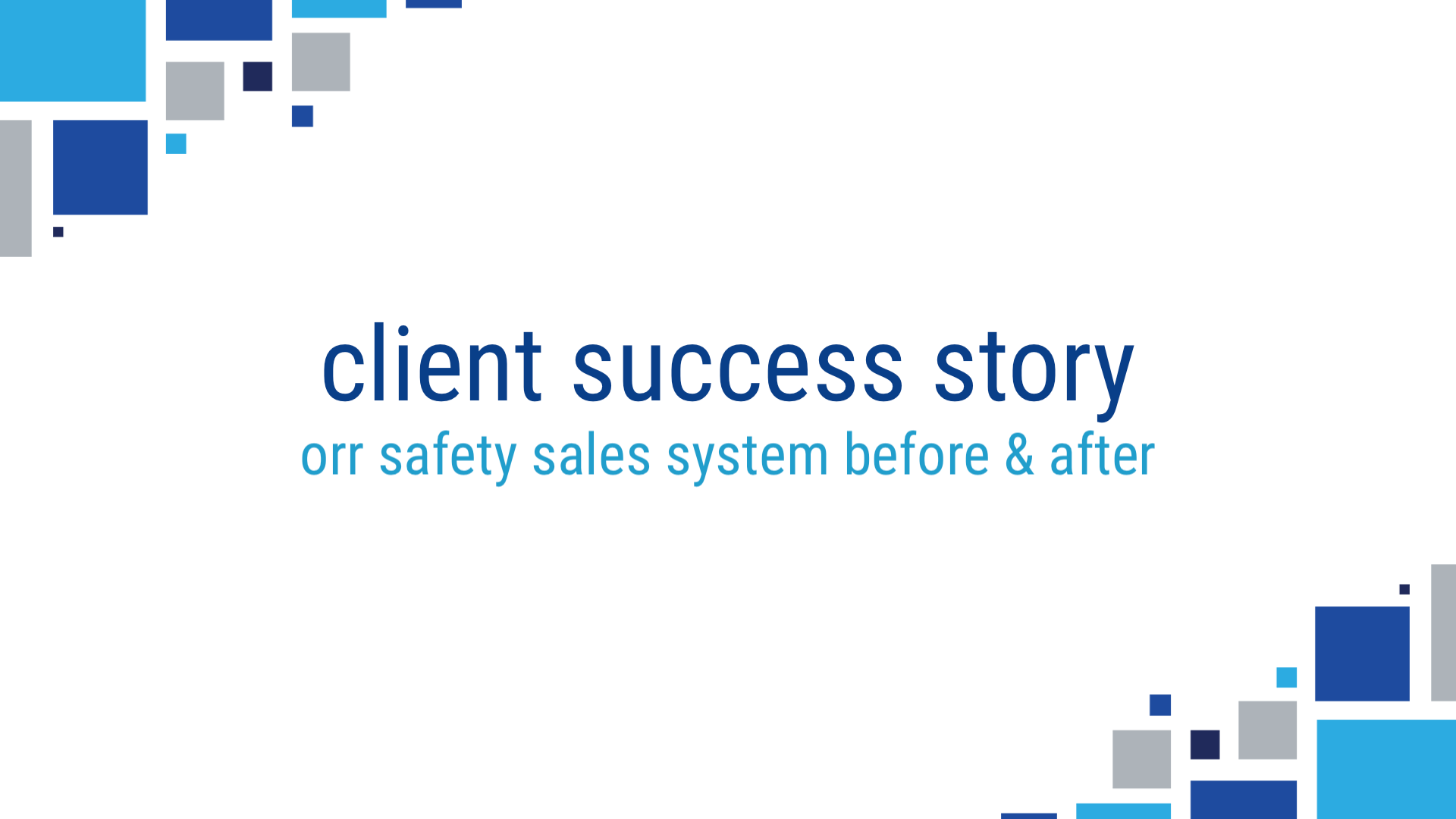
Your website has a bigger job to do than you realize
If the sales system is the engine of the Growth Machine, the website is the frame. All acquisition and growth strategies sit atop the website, constantly driving visitors into a variety of pages to serve their needs. While leads and customers are always important, it's critical for you to understand that prospects aren't the only ones trying to use your website to find help. Whether you sell a product or a service, your customers want more from your website too. Key relationships such as vendors, partners, and media also need to use your website. With so many different types of people to serve, your website has a big job to do these days.
Websites must serve as the #1 sales, marketing, and customer service vehicle
The need to provide different types of website visitors choice and convenience is upon us. There's an experience for each one of your visitors. It's either good, or it's bad. Before you turn your website into a one-trick-pony, consider the total experience you could provide. Consider the multitude of roles and responsibilities your website should be servicing. We call it

Emerging Trend 3 - Growth Driven Web Design
We believe in an emerging trend in website development called growth-driven design. It supports the strategy of putting the 'customer' first, enacting change quickly, constant evaluation, and continual growth. In other words, no more long, painful redesign projects with five years of nothing happening until the next one.
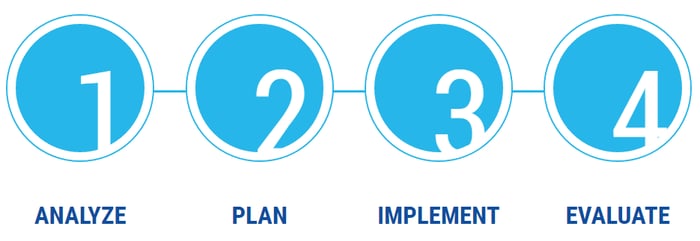
Applying growth-driven design principles to the Growth Machine
As I said above, your website has a big job to do. Our strategy is to rebuild the user experience of your website quickly so we can affect big change and create a total customer experience for the Growth Machine. It has to launch fast and should never stop growing. As user data flows, we evaluate, tweak, and add features and pages. The frame the machine runs on keeps getting better at its job.
When we take over a new client, we want to accomplish two things from a web perspective. First, we want to capture some low-hanging fruit. We want to get those quick wins. There are a lot of ways to do this, assuming our clients have a HubSpot CMS license. Here's a few examples:
- Migrate the site into HubSpot CMS
- Give the home page a quick face lift
- Inject a chat bot to scoop leads in a new way
- Conversion paths like CTA, forms, and offers on the existing site
- Move in some high-performing templates from our template library
Second, we want to build a modern user experience that feeds the needs of your visitors. If we want to increase the rate of results, we have to bring about significant change. We work through a series of steps with our clients to ensure we connect the critical site elements and conversion points to the buyer's journey.
EVALUATING WEBSITE PERFORMANCE
The first thing we need is eyes on the back side. We want to know how people are consuming the existing site. We prefer LuckyOrange, but there are other options that work great too. We leverage LuckyOrange to analyze how visitors are truly consuming your existing site, harvesting observations and recommendations for increased conversions and redesign strategy.
DEFINING A NEW USER EXPERIENCE
We build web strategy by leveraging the buyer's journey and performance analysis to re-engineer a new website experience. Through exploration, research, and strategy sessions we develop a series of creative concepts:
- Features of Focus
- Style Tiles
- New Site Map
- Wire Frames
LAUNCH PAD WEBSITE REDESIGN
Next, we reinvent the user experience to set the website up for long term success and growth. This usually means a complete strategic redesign from strategy sessions. Some of these projects are major reinventions; some are smaller in scope. This is where it really depends on where a client's baseline is. How well the site was built, how well it's performing, and how well it matches the vision for their sales and marketing strategy all factor into the redesign strategy. The key is to launch the site at the end of the first sprint, so we can begin driving results without delays.
ON-SITE SEO OPTIMIZATION
If the website is going to grow in relevance it's got to be optimized for search engines. We leverage our search strategy to architect search-friendly meta data for the entire site. The page titles, descriptions, alt and title text will all reflect the search engine optimization strategy. When the site launches, we submit the new sitemap to Google for indexing.
Building a modern marketing system
Think of the marketing system as the drivetrain of the Growth Machine. For the machine to move, it needs a well-developed drivetrain built to keep moving down the road towards goal. All communication, promotional activity, conversions, and educational efforts pump through the marketing system. Before you can get to that point, we need to set it up for scale. Our goal is to support our clients in developing an automated system for future execution and reporting. Here's the high-level look at the system development job.
AUTOMATION ENGINEERING
There's a lot of work to do to stand up an automation systems. For the launch pad automation project, we try to focus on the critical elements needed to get data flowing. Similar to the other systems, this varies depending on the existing state of each system we work on. For clients migrating to new technology like HubSpot, we develop a completely automated communication capabilities from scratch after going through all the basic setup of the portal. We develop the infrastructure to ensure all conversions can be enrolled in targeted email workflows based on possible qualifiers like persona, lead source, and position in the buyer's journey. We implement a series of smart lists behind the form system, so we can organize all existing contacts. This sets the system up for targeting these contacts with effective, intelligent messaging.
DATABASE MIGRATION & SEGMENTATION
Before we can begin effective communication, we have to clean up the existing contact data. This is basically a big hygiene job. It's best to setup the system before you cleanse, and cleanse before you load. That way we get a fresh start to all communication and make sure there's no contacts in the wrong bucket. We build migration and/or segmentation requirement maps, perform data hygiene using tools like Insycle, and migrate only relevant (or marketable) contacts into the system. Segmentation is complete when all qualifying contacts are properly sorted into a series of smart lists that allow us to send the right messages to the right groups of people at the right times. Now we're ready to launch into promotion with a healthy drivetrain!
Beyond the launch – weaponize, focus on conversions, continual build out
I see the race to compete for new business found in digital spaces to be an all-out war. To win even the smallest of battles, you have to have some weapons. As you build your arsenal, you have more and more tools at your disposal. A well built, diverse, continually growing military with hoards of provisions wins the war against the underfunded and underdeveloped. If you want to win the war, you better get building because your competition is undoubtedly ahead of you in their pursuit of victory.
So let's get this Growth Machine cranking. Let's build a ton of great weapons and deploy them into a battle for your customer's attention and satisfaction. With all the necessary foundational pieces in place, we can really turn up the heat on asset creation. We suggest launching into
What modernized weapons for your arsenal should look like
Things change quickly, per the reasons behind the top 5 emerging trends. Creating impactful videos is easier, cheaper, and faster than it used to be. Conversational marketing, chat bots, and artificial intelligence all have a part in the modern growth stack strategy. Pillar pages, expert blog content, helpful sales collateral, long communication sequences, event and promotion, and supporting all the traditional sales stuff like conferences fit the bill.
Emerging Trend 4 - Conversational Marketing
There's a movement that's happening that you need to pay attention to. The death of the form. Gone are the days with prospects willingly complete multiple forms in a journey down an over-simplified funnel with dollar signs at the bottom. People want choice. They want convenience. They want the ability to do their research without a sales person blowing them away 5 minutes after they download an offer. Enter conversational marketing.
The ability to have conversations in real-time, at the customer's convenience. The ability to speed up conversions and allow visitors direct access to find what they need, even book an appointment on the spot. The logic and artificial intelligence is already there, and it's gaining ground quickly. Why? Because it's serving the customer better than shitty landing pages with over-blown forms. Here's how we leverage conversational marketing to solve for our clients:
CONVERSATIONAL MARKETING BLUEPRINT
The blueprint is all about mapping intent. We conceptualize the buying experience from the point of view of a client's future customers, established by answering the simple questions: What, Who, Where, and Why? By doing this for personas we've chosen to target, we create optimized communication flows that drive more qualified conversations between your buyers and your sales team. The same logic works for customer service, directing communication to a variety of departments, and serving all the relationships that have come to expect accessibility through your website. We put everything together to produce a master conversational marketing blueprint that details a complete strategy for chat bot, live chat, integrated conversions, etc.
BOT PLAYBOOK CREATION
Now we build playbooks to invite visitors to a conversation. The launch into
Emerging Trend 5 - Topic Clustering
The concept of pillar pages with supporting pieces of content clustering around it is a critically important trend in Growth Stack Marketing. Topic clustering is all the rage with content-based search engine optimization strategy. It's proving to be an exceptionally effective method of driving your best content on your most relevant 'topic' to the top of search engines. With relevant ranking comes traffic, and with traffic comes leads.
The idea is simple: figure out what topic you want to compete for. Growth Stack Marketing, for example. That's a topic that this article might be able to compete for. It's what we do, so it seems relevant. I write a very detailed, definitive piece on the topic. This piece will serve as the center of my SEO strategy for the respective topic.
Think of it as the sun (or pillar page) around which all planets in the same solar system will rotate. Now I begin building smaller cluster articles and resources. They're related, or topical, to the sun. I tell Google that they're related by putting a link in each cluster piece directly to the pillar piece. I keep building away, creating new planets and linking them to the sun. I build cluster articles and point them to my pillar page. That's the concept of topic clustering.
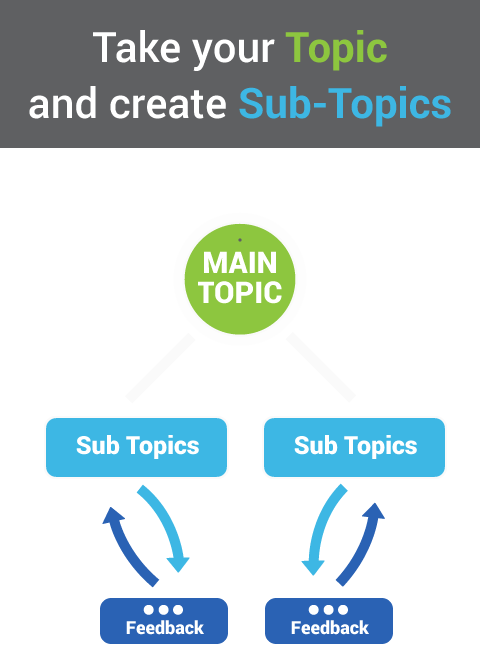
Topic clustering has a boosting effect to content relevance. It drives rankings up for truly rich content much faster than anyone can drive rank for a web page. It provides the searcher a fantastic wealth of knowledge which is afterall more interesting and valuable to them than your landing page and form. It's ungated for the user, and it's ungated for Google. No email and middle initial necessary. Here's a short video to help you understand the structure better, and some detail into how we attack this strategy as an agency to follow:

BUILDING PILLAR PAGES
Because each pillar page must truly be a definitive resource on a topic, it needs to contain a lot of content. We suggest starting a goal of at least 3,000+ words. You'll want to include relevant imagery, infographics, videos, statistics, and third-party resources too. Remember, your pillar pages will serve as the center of our SEO strategy, providing an exhaustive resource for each topic. These resources will be optimized and supported by blogging and link building efforts, allowing team members to cluster existing and new content around that page.
WRITING CLUSTER ARTICLES
You'll have two options for clustering content around your pillar pages. The first options is to use what you've already built. Clustering existing content by re-optimizing and changing the internal links to point to the pillar page on a matching topic is low-hanging fruit.
Your next opportunity is to write fresh content about subtopics that you've researched to ensure relevance and traffic. We suggest doing the research to expand your pillar topics with a list of long-tailed subtopic titles that are worth targeting. Then write the articles directly from an editorial calendar, including an internal link directly to the pillar page in each article.
VIDEO PRODUCTION
If there was any doubt people like to consume video content, consider that 85% of internet users in the United States watched online video content. The call to action is that you've got to incorporate video, and a lot of it. We suggest creating new videos on a regular basis for use in our marketing communication and promotion. Video comes in many forms these days, including mixed media, live shoots, 2D explainers, and whiteboard videos. As an agency, we've invested heavily into this content format to meet the growing demand for affordable video production. We support clients needs from pre-production script and strategy development to production and post-production editing, formatting, revisions, and publishing videos for distribution. When your library begins to take shape, we always recommend our clients leverage the considerable marketing and conversion capabilities of Vidyard. It's the best video tech on the planet.
SOCIAL MEDIA MARKETING
The social media climate has changed dramatically in recent years. Algorithm updates are preventing much of a brand's content from reaching their fans without promotion, making it more difficult to get your message out. We've seen our role in supporting organizations change too. We work to develop a social strategy that leverages our client's best-fit channels and empower our clients to own much of their content. While using social media to distribute content is still in our sweet spot, our client's are generally charged with what we call 'capturing the experience.'
EMAIL MARKETING
Email is boring, but still very effective. It's not as sexy as some of the emerging trends in digital marketing, but it plays a critical role in communicating with all types of contacts. The automation systems allows for complex workflows with branching logic for multi-touch nurturing throughout the campaigns. The smart list system allows easy targeting for marketing emails. From the time any contact comes into the Growth Machine database, they're tracked, sorted, and communicated with contextually, based on what we believe they're interested in learning more about. Keeping leads engaged, furthering the education journey, and identifying sales triggers for warm handoff are all functions of email marketing. For our B2B clients we love adding LeadGnome to the mix as we've found the ability to mine email replies especially helpful with CRM enrichment and sales trigger identification.
SEND TIME OPTIMIZATION
We love to blend some AI-layered machine learning into our email efforts by adding SeventhSense to the Growth Machine's software stack. SeventhSense gives us the ability to send emails at customized delivery times according to the preferred day and time individuals are most likely to read their emails. The software allows us to learn when your users are most likely to read and respond to emails, ensuring optimal send times for all deliveries to increase engagement and response. Launching marketing email workflows with SeventhSense early only allows us to begin building send-time preference data. Over time, email efforts improve open and click-through rates. I love it when technology makes the marketer's job more effective!
INBOUND LINK BUILDING
Growing relevance and traffic is a continual focus for SEO efforts. One of the long lost arts of SEO is link building. While it's changed in scope quite a bit over the years, it's still highly relevant when done correctly. We believe in the good old process of hard work through human outreach for link building. Researching sites, suggesting content to link to, sharing guest articles, and working directory profiles. It takes effort and skill to procure organic and directory-based profile links to support our SEO strategy. We'll build inbound links to our client's websites on an ongoing basis because they add up into higher relevance and authority. That drives traffic opportunity, helping their website assets get found more often.
MOBILE VIEWING EXPERIENCE
While any website built to best practice standards will certainly reformat to fit smart phones, there's more to mobile viewing than responsiveness alone. We believe in treating the mobile experience differently than desktop. We develop a custom viewing experience beyond responsiveness alone, mapping a unique journey that strips non-essential elements for those that choose to engage website from a mobile device.
ACCELERATED MOBILE PAGES
Another way to increase engagement with your web pages and content is to optimize it specifically for mobile viewing. AMP is a project from Google and Twitter to make really fast mobile pages. The keys are twofold. First, it creates a better experience for users. It helps load times and display, making it easier for them to consume content. Second, it's a great way to ensure your articles rank as well as possible, increasing the likelihood that they get found by users. We take visibility and performance into consideration during our Growth Machine strategy and execute an AMP plan for our clients to ensure their best content loads fast on mobile devices.
Advertising is an important element to many growth strategies
I often suggest dedicating a portion of a growth strategy budget
AD CAMPAIGN BUILD OUT
Advertising is an important element of Growth Stack Marketing as far as we're concerned. While many agencies choose to avoid ad management, we've embraced the challenge. We've found advertising to be a great way to drive targeted eyeballs to conversion points. This is why we love injecting an advertising campaign as assets start to build and lead generation becomes our goal. To get started, we research, craft a channel strategy, and build out all campaign assets.
ONGOING OPTIMIZATION
It's important to understand that the ad budget and timeframe matters. We need enough data to develop proof of concept, which means you need enough budget and time for ads to work. We never recommend making changes to ads before we have enough results to make data-based decisions. When we get proof of concept in place, there are endless options for optimization. Addressing negative keywords, expanding creative, ad copy, and destination pages are generally part of the process.
Adjusting budget allocation to high-performing channels and ads makes a lot of sense. We just don't like to do it until there is enough data to support such optimization. A good advertising campaign will increase in effectiveness as time goes on. Reducing cost-per-conversion (CPC) stats is always our focus. The cheaper the conversion, the more conversions we can get out of your budget. You don't always have to spend more to get more, you just need patience.
The role of the production manager
Someone has to keep everyone pointed in the right direction. Someone has to manage the machine. At our agency, we take full responsibility for ensuring everyone is on track. It's the Campaign Manager's job to guide your growth machine moves from concept to goals. They reach out as soon as a new client agreement is in place and stay closely connected to every element of the campaign. Here's the short list of communication, meetings, and reporting we bake into all growth stack campaigns to ensure fantastic alignment and results:
REGULAR CADENCE MEETINGS
We host and manage a tight agenda to review open items, raise concerns, and address priorities. We' use this time to go over concerns, status, and collaborate on items we need input for. For many clients, this is a weekly meeting. For some, it's only necessary to meet once per month. It just depends on the level of engagement and how often a client wants to be brought up to speed.
MONTHLY DELIVERABLE REPORTING
We report on all deliverables, past-due items, and upcoming deadlines associated with the sprint to keep all teams on task. We'll share status and schedule for all deliverables for the sprint in an easy-to-track Google sheet, pulling detail from our Teamwork PM software into a high-level overview so the client has full visibility into our activity.
MONTHLY PERFORMANCE REPORTING
Reporting is critical to campaign success. We're focused on demonstrating success, not just creating success. To do this, we build and review monthly performance reporting towards goals. We track a series of both level 1 and level 2 data points. Level 1 is all the goals. Traffic, leads, and customers usually qualify, including the host of metrics we've identified as valuable to your organization during onboarding. Level 2 gets into the details a bit, where clients can see many of the lead indicators towards future results. Keyword rankings, social engagement, email engagement, and sales activity are all examples of L2 metrics we report on.
For visualization, we use a combination of Databox and Grow. Each have the ability to connect multiple data sources into one report. That means we can pull numbers from sources like Google, HubSpot, Saleforce, SeventhSense, SEMrush, and even SQL databases into live reports that have an easy-to-share link. We can put performance numbers directly into the hands of all stakeholders, providing real-time visibility into any metric they can dream of.
Here's an example of some Level 1 metrics from Grow:

Here's an example of a Databox report with some Level 2 metrics:
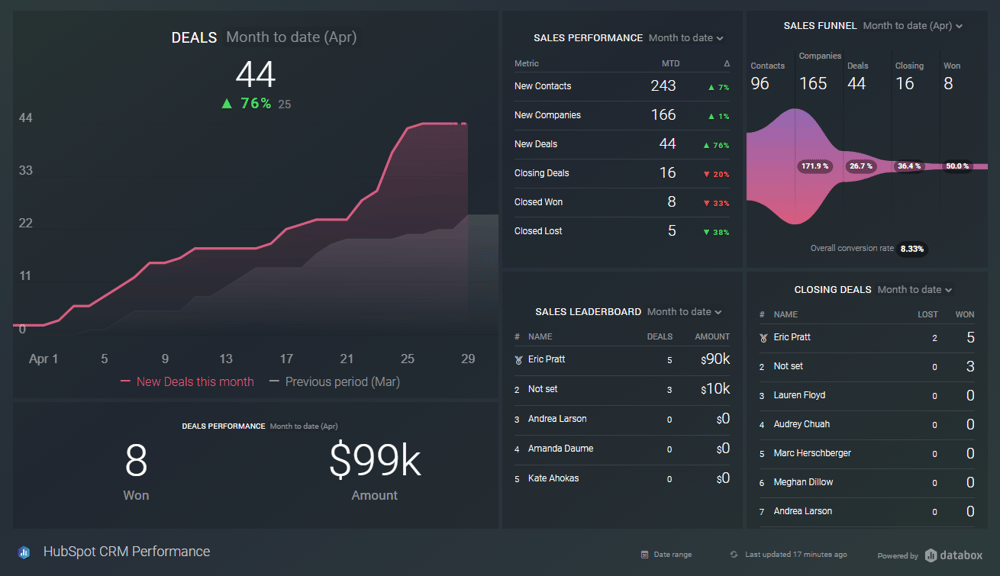
QUALITY ASSURANCE
With so many moving parts, it's easy to overlook something. Adding a layer of quality assurance is important to include as a fail safe. Our Campaign Managers take a final look at all assets prior to delivery as a final quality assurance step. If any item doesn't meet our standards, they reject it and adjust the timeline accordingly. Sometimes it's worth missing a target date to ensure everything's right. We'd rather go one step above our individual review processes to help our clients have confidence in our finished products.
Here's what I think it takes to build a successful relationship
There are a lot of moving pieces to a successful digital growth campaign. So many pieces, so many people. To get it all to work there's a formula we've come up with. They're aren't impossible to follow, it just takes discipline and trust. If you ever decide to engage an agency to support your growth goals, I strongly advise considering how to build a successful relationship. Here's how:
- Both parties must stay focused on goals. It's important that everyone focuses on the plan if you're going to reach your goals. When projects come up that don't fit, handle them elsewhere. Substituting long-term success for the convenience of tapping your agency for help generally isn't worth it.
- You have to publish to win with digital. Campaigns that get ground to a halt fail. Everyone must stick to publication schedules, adjusting or enhancing assets once they're
live . - Both teams have to be present and prepared. You'll have too many related items with working dependencies to miss steps. The agency should present clear agendas. They'll need your team to be available for meetings and to show up properly prepared.
- You must be efficient with everyone's time. Agencies should commit to running tight agendas based on the topic and timing of every meeting. I'll caution that you can't get sidetracked with unrelated topics and need your help ensuring we stay on agenda and prompt.
Working well as a team is the key to success
In the agency world, we know this all too well. The absolute key to short and long term success with digital is bringing the entire team together, pointing them towards common goals, and executing with discipline. The best agencies are built like this. They're built to align, augment, and support their clients. From my experience, there are two types of clients. Those that understand how to get the best out of their agency and those that don't.
Organizations that know how to get the most out of their agency relationship:
- stay focused on goals
- stay out of the weeds
- put trust in the agency
- share ideas and collaborate
- inspire direction and provide constructive feedback
- adopt agency processes and tools
Organizations that don't know how to get the most out of their agency:
- treat them like a vendor
- isolate them from their team
- give them orders and treat them like short-order chefs
- hold them to a different standard than their own team
- grind things to a halt in pursuit of perfection
Agencies have to do their part if they want to be trusted:
- have your shit together
- be experts in their areas of service
- back strategy with data
- own their mistakes and work to improve
- train their teams continually on the latest tactics

How to build a budget & get your Growth Machine started
I've made my feelings known about pricing on many occasions. So many agencies get this wrong in my opinion. They're too concerned about building a box to put every client in. They build 'minimum' budgets and turn everyone away that doesn't fit. It's just not the way to to work with clients in my opinion.
Instead, our approach is a bit different. We evaluate every opportunity, never quote minimums, and work with our clients to build a budget we're both comfortable with. To get there, I like to start by defining the job to be done. Then, I work with the client to determine what roles we'll fill and what their team can handle. Finally, we determine the
You won't make an impact if you don't invest
Remember, this is an arms race. You don’t catch up without resources. If you want to compete and win with digital, you have to invest. So, my advice is if you're going to get wet, jump all the way in.
I suggest setting aside $250,000 for your first 12 months. This will cover software costs, services, and advertising budget. A standard breakdown looks something like this:
- $40,000 for software
- $150,000 for services
- $60,000 for advertising
If you invest at this level, you won’t regret it. Can you do this for less? Of course. But you won’t win faster. You have to make the budget for this. You have to redesign how your organization is structured.
What are you waiting for? As I said before, this is an arms race. If you're reading this, you're behind. You're not going to catch up through indecision. If you don't gear up your efforts with digital you're going to get left behind. It's already happening, and denying it isn't helping your cause. Take the plunge, and you'll thank me in a year. In case you're not paying attention, this is why it's so important to act. The world is changing quickly...


